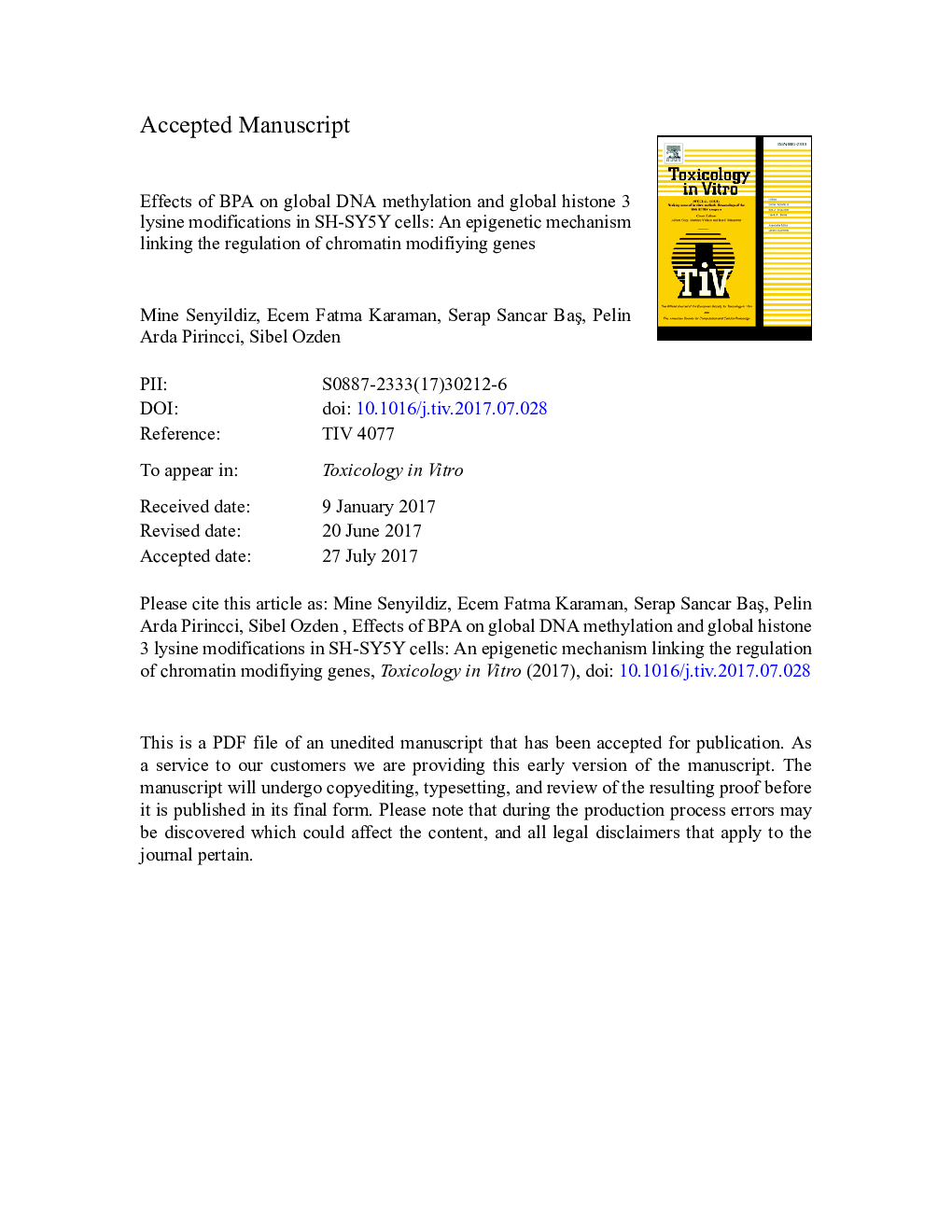| Article ID | Journal | Published Year | Pages | File Type |
|---|---|---|---|---|
| 5562538 | Toxicology in Vitro | 2017 | 30 Pages |
Abstract
Bisphenol A (BPA), an estrogenic endocrine disruptor, is widely used in the production of polycarbonate plastic and epoxy resins, resulting in high risk on human health. In present study we aimed to investigate the effects of BPA on global and gene specific DNA methylation, global histone modifications and regulation of chromatin modifiying enzymes in human neuroblastoma cells (SH-SY5Y). Cells were treated with BPA at 0.1, 1 and 10 μM concentrations for 48 and 96 h. IC50 value of BPA was determined as 183 and 129 μM in SH-SY5Y cells after 24 h by MTT and NRU tests, respectively. We observed significant alterations on the 5-mC% levels (1.3 fold) and 5-hmC% levels (1.67 fold) after 10 μM of BPA for 96 h. Significant decrease was identified in H3K9me3 and H3K9ac after 10 μM of BPA for 96 h while decrease was observed in H3K4me3 at 10 μM of BPA for 48 h. Alterations were observed in chromatin modifiying genes including G9a, EZH2, SETD8, SETD1A, HAT1, SIRT1, DNMT1, RIZ1 and Suv39h1 after 96 h of BPA exposure. Taken together, this study suggests that BPA might modulate the epigenetic regulators which would be key molecular events in the toxicity of endocrine disrupting chemicals.
Keywords
BPASH-SY5Yhistone H3 lysine 9 acetylationCDKN2AH3K27me35-hmCH3K4me3EFSAIC50SK-N-SHLSDHistone H3 lysine 27 trimethylationHistone H3 lysine 9 trimethylationH3K9acH3K9me3RASSF13-(4,5-dimethylthiazol-2-yl)-2,5-diphenyltetrazolium bromide5-mC5-Methylcytosine5-hydroxymethylcytosineMTTNRUp16International Agency for Research on CancerIARC یا International Agency for Research on CancerEuropean Food Safety AuthorityLysergic acid diethylamideBisphenol AHistone modificationsneutral red uptakeSH-SY5Y cellshuman neuroblastoma cellsCytotoxicityDNA methylationthe half maximal inhibitory concentrationhistone H3 lysine 4 trimethylationpolymerase chain reactionPCRoptical density
Related Topics
Life Sciences
Environmental Science
Health, Toxicology and Mutagenesis
Authors
Mine Senyildiz, Ecem Fatma Karaman, Serap Sancar Bas, Pelin Arda Pirincci, Sibel Ozden,
